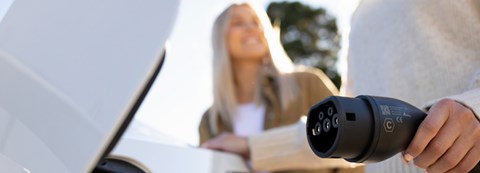Development of the energy system
The energy transition creates challenges, but also creates opportunities to develop a smart energy system that at the very least neutralises the share of greenhouse gases contributing to climate change. Fossil fuels are replaced by renewable forms of energy production in a distributed manner in heating, electricity, and industrial processes, among other things.
We must develop our energy system in order to move towards our goal of carbon neutrality by 2030. At the same time, we are continuing to enable cheaper energy production in our region, as well as more efficient distribution and use of energy in the future. Developing the energy system also has positive effects on the regional economy, that is, on the promotion of investments and technologies important to Oulu.
The measures to be taken during the transitional period are significant, as at the same time, Fingrid is estimating that electricity consumption in Finland will double from the current level by the end of the decade. This means that we not only replacing existing production methods, but also increasing the amount of energy produced nationwide. The increasing consumption of electricity in Finland is mainly caused by the electrification of industry and transport, the construction of data centres, and the increase in hydrogen production.
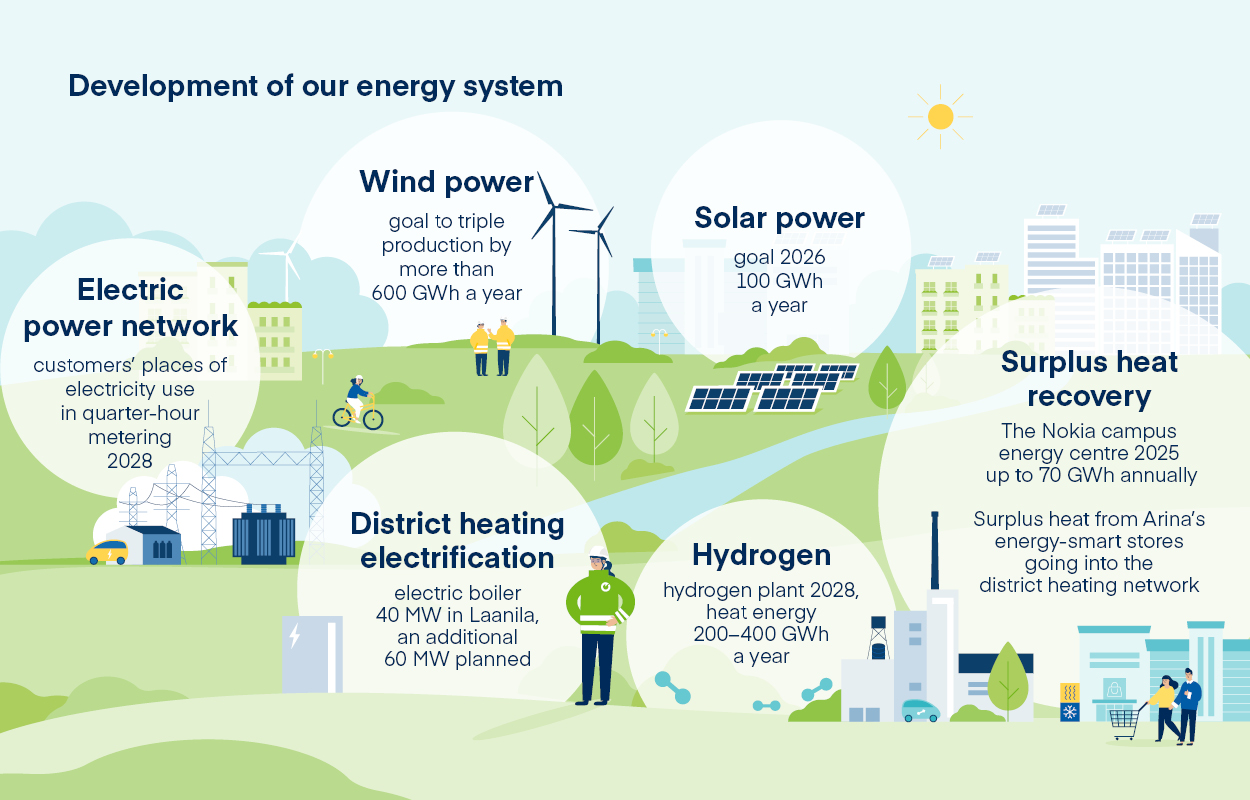
We are planning hydrogen, wind, and solar development projects
New technology and solutions for the production of renewable energy are emerging alongside combustion-based power plants around Oulu, but also elsewhere in Finland. From the perspective of Oulu residents, this means increasing investments in solar and wind power and hydrogen production and its derivatives, such as synthetic fuels.
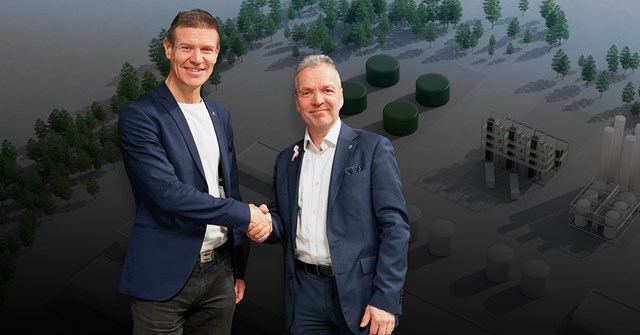
The Laanila hydrogen project
The plan is to commission the hydrogen production plant in Laanila no earlier than 2028. In addition to an electrolysis plant with a capacity of up to 100 megawatts (MW), it would include a carbon capture plant, hydrogen and carbon dioxide storage, and a further processing plant. According to a preliminary estimate, the by-product will be about 200–400 gigawatt hours (GWh) of surplus heat annually, which could be transferred to the district heating network.
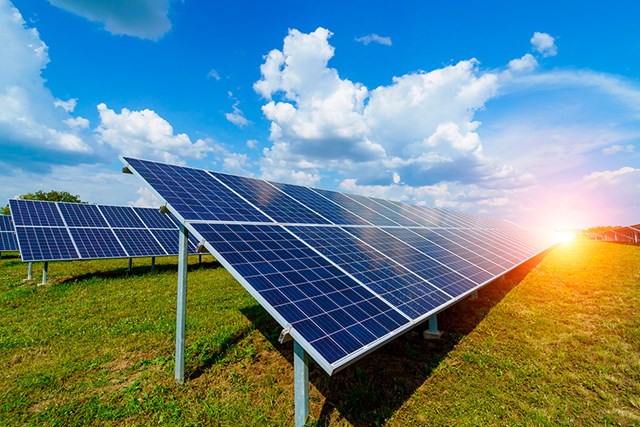
Solar and wind power
Oulun Energia’s goal is to own 100 MW of solar power capacity by 2026. We are advancing this goal by developing our own projects, as well as by evaluating various solar power shares and projects for sale. The share of wind power will increase by 114 MW over the next year when the Lestijärvi wind power station is commissioned.
We are developing a smart and sector-integrated energy system
In our new energy system, energy is not only transferred from the power plant to the place of use, but operates in a sector-integrated way by merging electrification with district heating.
Sector integration will enhance cooperation between energy production and consumption, increase flexibility and storage opportunities, and more closely couple actors in different sectors. Properties will also be integrated into the energy system, and even individual consumers will become energy storers and producers.
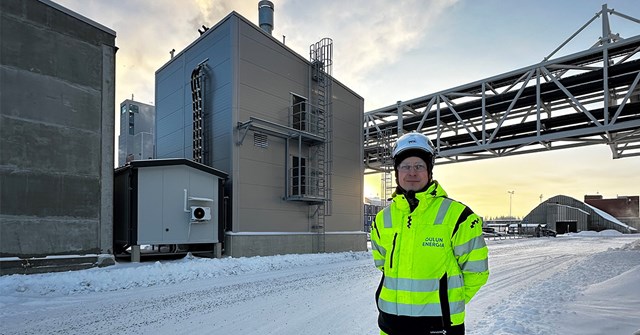
The electrification of district heating
Electric boilers produce district heat during periods of inexpensive electricity, which makes it possible to take advantage of electricity price fluctuations and to produce cleaner district heat.
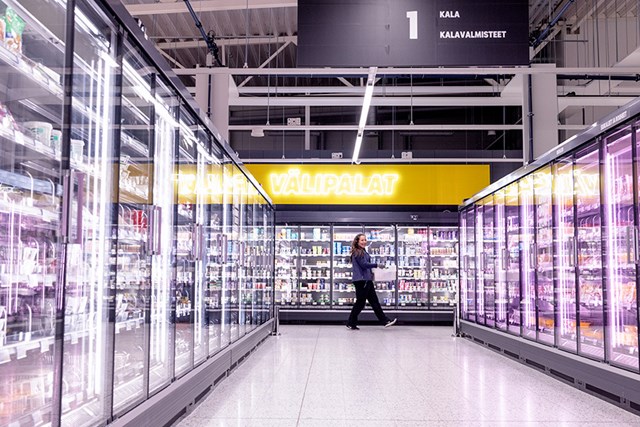
Recovery of surplus heat
We utilise surplus heat from properties and industry in our district heating network. In this way, we are reducing the need to utilise fossil fuels in district heating production and are cutting our carbon dioxide emissions.
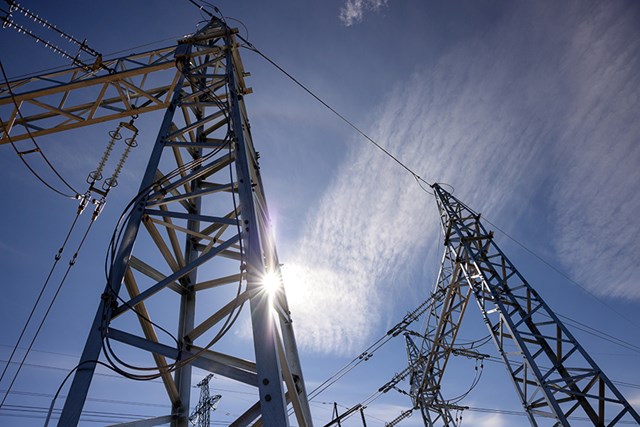
Customer's own electricity production
Before, electricity and district heating were transferred from power plants in only one direction, to customers. Now, consumers can produce electricity themselves, for example with solar panels. Our task is to provide a reliable network and ensure the operation and safety of electricity distribution also for their own small-scale production.
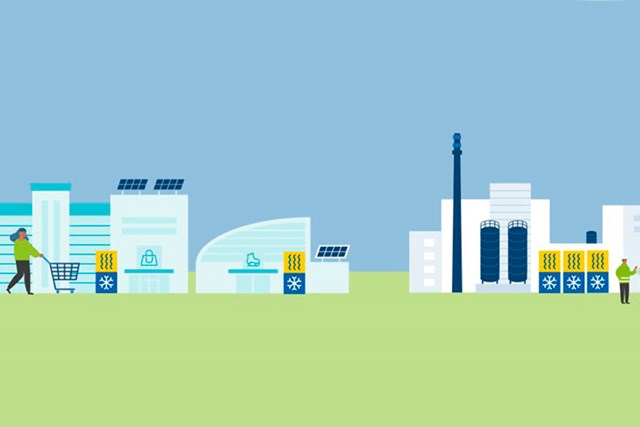
Open district heating
An open district heating network allows for the sale of surplus heat generated from companies’ operations into our open district heating network.

